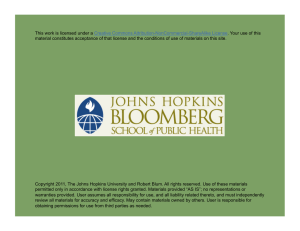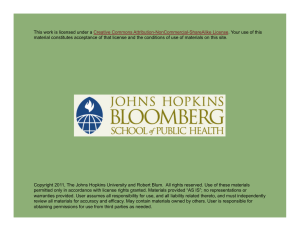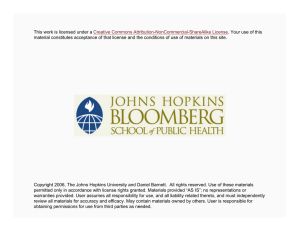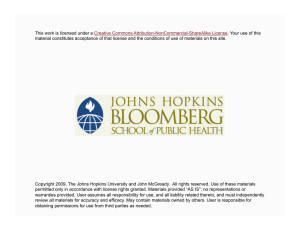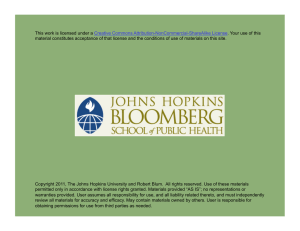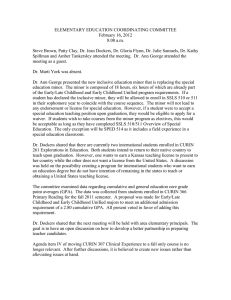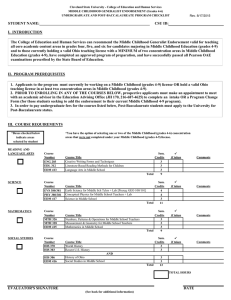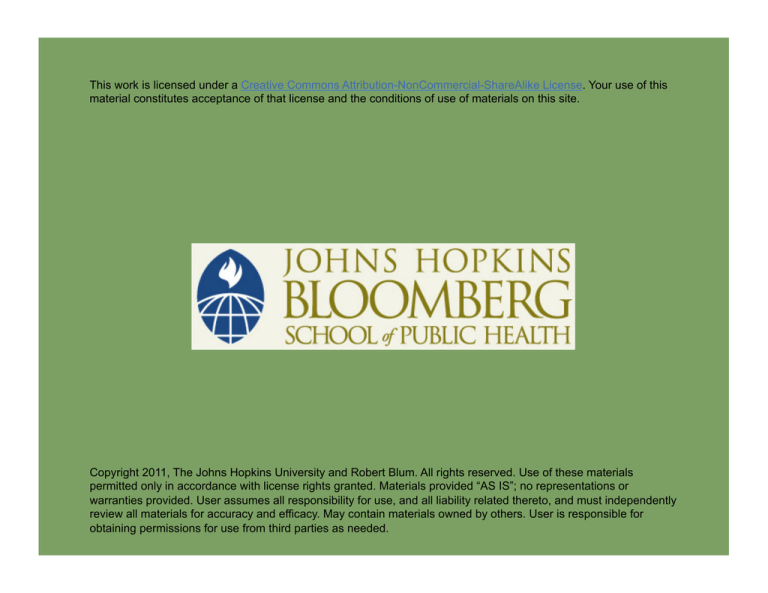
This work is licensed under a Creative Commons Attribution-NonCommercial-ShareAlike License. Your use of this
material constitutes acceptance of that license and the conditions of use of materials on this site.
Copyright 2011, The Johns Hopkins University and Robert Blum. All rights reserved. Use of these materials
permitted only in accordance with license rights granted. Materials provided “AS IS”; no representations or
warranties provided. User assumes all responsibility for use, and all liability related thereto, and must independently
review all materials for accuracy and efficacy. May contain materials owned by others. User is responsible for
obtaining permissions for use from third parties as needed.
Language and Conceptual Framework
for Early Child Development
Robert Blum, MD, MPH, PhD
Johns Hopkins University
Section A
Defining Terms and a Changing View of Children
Defining Child Health
Children’s health is the extent to which individual children or groups
of children are able or enabled to (a) develop and realize their
potential, (b) satisfy their needs, and (c) develop the capacities
that allow them to interact successfully with their biological,
physical, and social environments
- Institute of Medicine. (2004). Children’s health, the nation’s
wealth.
4
Childhood
Preschool age (early childhood)
- 3 to 5 years of age
- Period marked by rapid growth in many areas—physical growth,
cognitive capacities, social and emotional skills
- Family is the primary context for development
- Much recent focus on birth-to-3-years period
School age (late childhood, middle childhood)
- 6 to 10 years of age
- Physical and cognitive growth less rapid, but significant
biological changes set stage for adolescence
- Period marked by transition to school and expanding social
world, notably peers
- Historically this stage has received little attention
5
Our Notions of Normal Child Behavior Have Shifted
In the early nineteenth century, heavy
drinking was common even among
children 10–12 years old
Poverty was seen as the result of
drunkenness
- New York Children’s Aid Society
- Rise of “Child Savers”
6
An Abrupt Transition in the Mid-1800s
In the mid-1800s transition from childhood to adulthood was often
abrupt
One day children were told to put away their books—that they were
going to work
- Children accounted for up to half of family income
- Children as young as 7 were apprenticed
- In many states, age of consensual sex was under 12 years
7
School
Horace Mann wrote of its importance in the 1850s … compulsory
education did not take root until the early 1900s
In the early 1800s, schooling was more likely to be reserved for girls
Public education was supported by labor unions of the 1800s
The prevailing notion in the mid-1800s was that schooling was bad
for women’s physical and mental health
8
Child Labor
Increasingly, automation diminished
the need for child labor
By 1917 there was almost no demand
for children in the workforce
9

